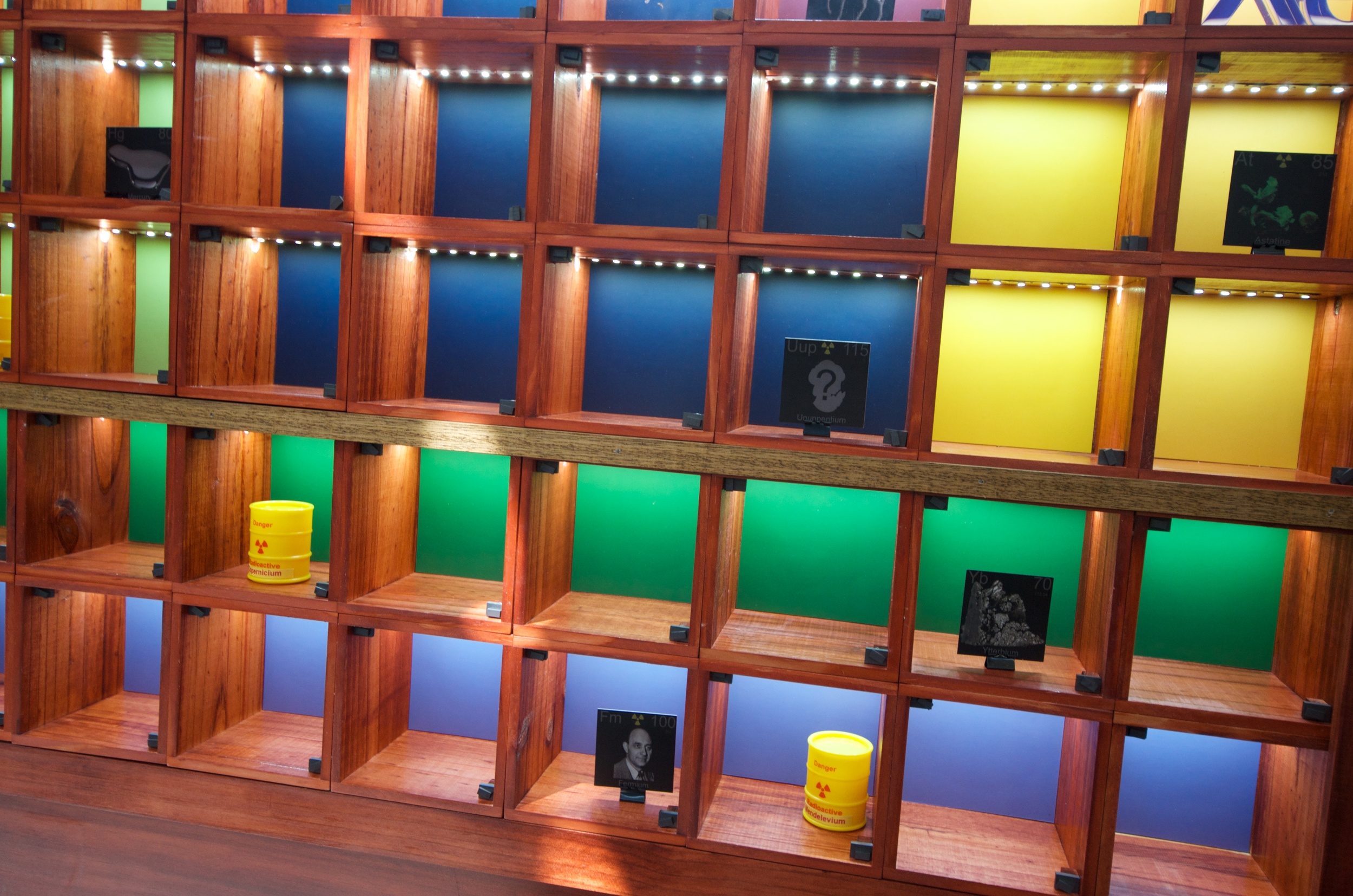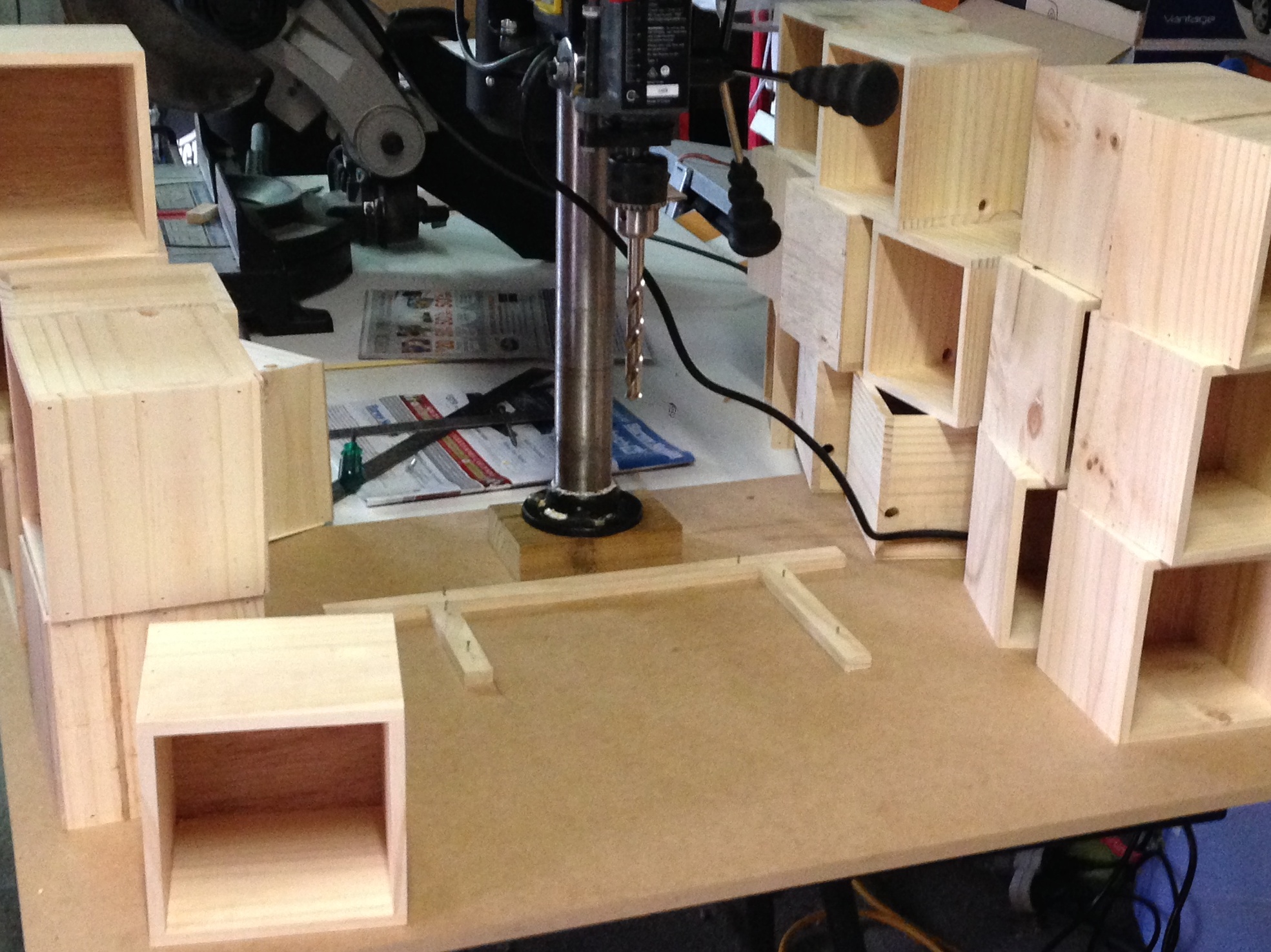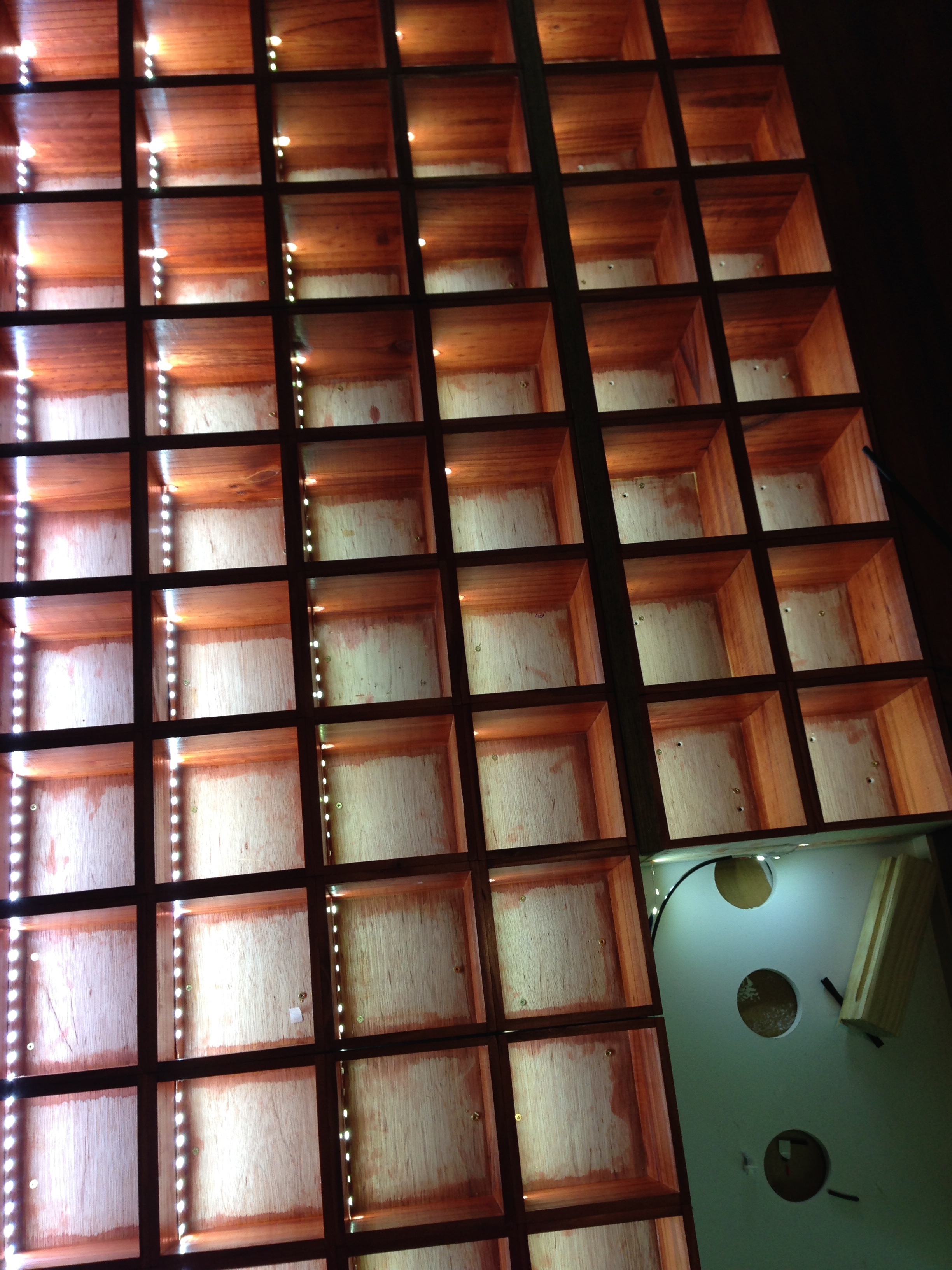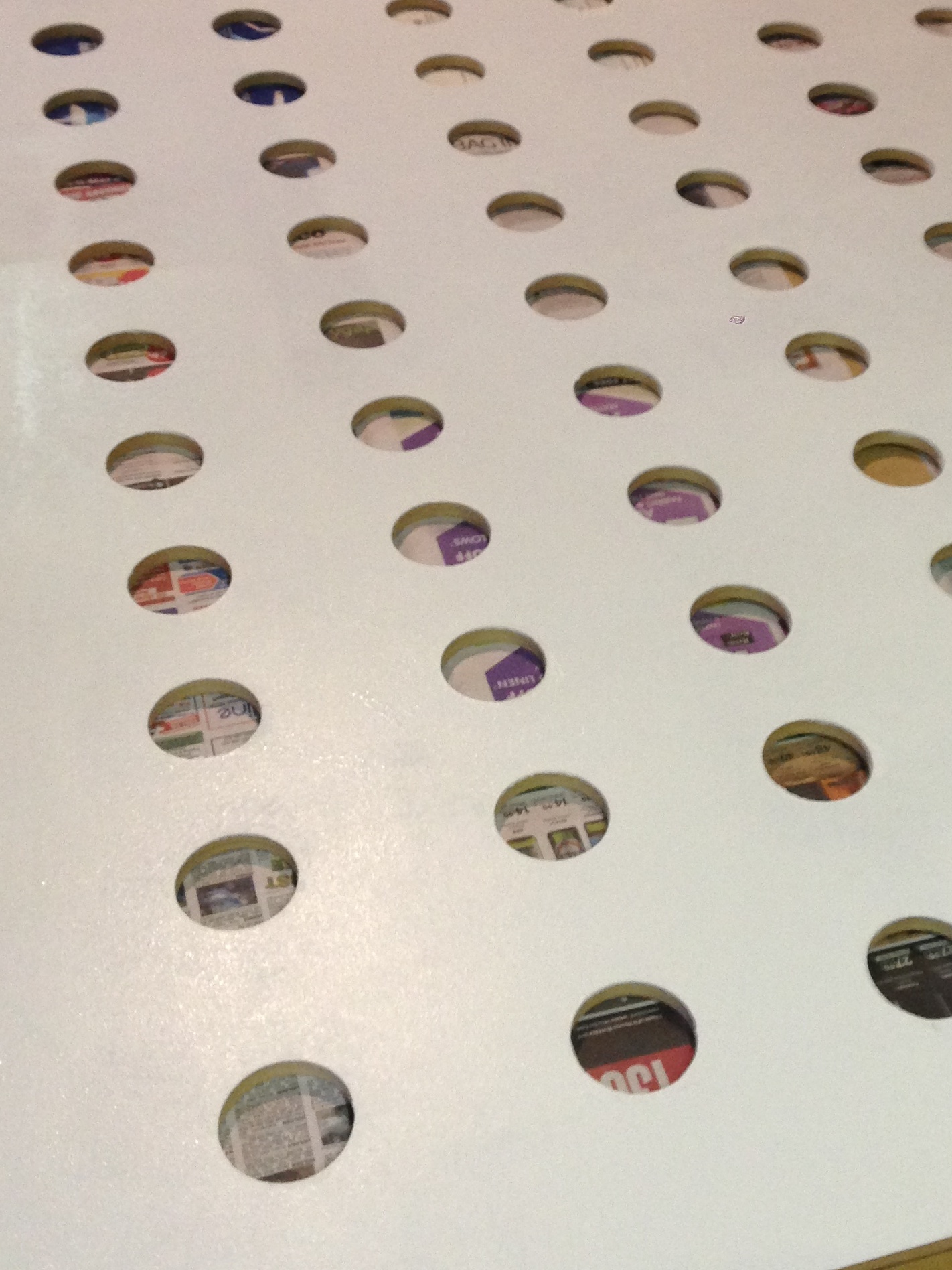For the past eight years my students in Year Six have participated in a Personal Passion Project during Term Four. It is a way to finish their time in Junior School with a project that connects their passion with all they have learned about managing inquiry/design based projects to that point. Over the years it has proven to be a highlight of the year and has produced amazing results. With a change to the Australian & NSW syllabus we have had to revise our approach to the Personal Passion Project and so now is the perfect time to reflect on the past and identify the lessons learned.
Firstly a little history, in 2007 Redlands was in the final stages of an experiment with Middle Schooling. Years Six, Seven and Eight were involved and the key difference between the middle school and a traditional primary school was that students spent most of their day in one of two classes; Humanities and Sciences. Teachers worked in pairs with one taking the two classes for Humanities and the other taking these same classes for Sciences. Each teacher had one of these classes as their 'Homeroom' class with a pastoral focus. This model worked well as the team of two teachers knew the students in their classes well and was able to share insights and perspectives about the students that might have been missed by one teacher working alone.
My 2007 homeroom class contained the year group's top cluster of students, at this time we partially streamed classes. These students were naturally high achievers with some unique personalities and quirky interests. By the time Term Four arrived I needed to offer them an alternative to the homework they were used to, something that would challenge their abilities and motivate them to show what they were capable of. My idea was to offer the option of a 'Personal Passion Project' as a homework task. I had expected only a few to take up the offer, in the end the whole class did and the degree of enthusiasm was such that I needed to find time within the timetable to allow the students to work on and share their developing projects.
The idea of a 'Personal Passion Project' was not unique in 2007 but was less common than it is now. Ideas like ‘Google's 20% Time’ were not well known in Education nor was the term 'Genius Hour' commonly used. How to best structure and support a Personal Passion Project was not something I had given much thought to as I really did not think many students would take the option. The result was that the class and I sort of fell into the project and learned as we went along. A key to the success at this point was the collaboration that took place between the students. Without prompting from me they were encouraging and supporting each other through the projects. This collaboration ensured that deadlines were met and that individuals never felt overwhelmed by the scale of what they had taken on.
The results of this first year showed the potential of the concept. I had students designing and making horse blankets, creating dance costumes, exploring architecture, writing books of poetry, investigating aerodynamics and writing short stories. What impressed me most was the depth of understanding the students were able to demonstrate at the end of the projects. The students had solved real problems, applied the design cycle and managed their time effectively; they demonstrated all of the skills I hoped my students might have developed after seven years of formal education.
At the end of this year I had the opportunity to chat with a Year Six teacher from a nearby school. I heard of how difficult the students had become in the last weeks of the year. As I taught two Year Six classes I could relate to this experience but only for the class not involved in the Personal Passion Project. For the class that had been involved the experience was very different. While one class was moving into holiday mode the other class was at their most engaged. Late in the final week of term we spent a morning sharing our projects and discussing the process. I asked the class 'should I do this next year?' and the resounding response was 'yes'. The general feeling was that this was the best thing they had done at school.
The signs were positive and when I shared my experiences from this pilot programme with my colleagues in 2008 they were keen to give it a go. This time all of year six would take on a Personal Passion Project during Term Four. This would require some additional planning and as this was now a core piece of our teaching would require more detailed programming. This was also our first year back in Junior School with a traditional one teacher per class model. This first year was a great success in many ways but there were also lots of lessons to be learned in a short period of time. Fortunately thanks to a skilled group of teachers and enthusiastic students we were able to solve most of the little problems that came along.
The Personal Passion Projects have produced an enormous variety of projects, too many to list. There are those that recur each year and others that are truly unique. It is the projects that fall furthest from what one expects of a Year Six student or are least likely to be covered in a traditional syllabus that stand out. Projects like these:
In 2012 two projects stood out; one as it was the sort of project that at first I thought was going to be too difficult, the other because it was quite unexpected. The first student decided he wanted to build a laser CNC engraving machine from old printers. What impressed me from the outset was that he knew exactly how he would make it work and what difficulties he would encounter along the way including how he would control the movement of his laser in two axis and how he would program it. In the end it worked almost as expected and if not for some last minute issues with the laser being fried by excessive voltage, would have been perfect. The second was a project to explore low cost emergency housing for cold climate situations. This became a highly scientific investigation of the insulation properties of a range of recycled materials.
In 2014 a student in my class decided he would make a guide to creating an ‘Internet Start Up’ company. His final product was exceptionally well produced and based on detailed research into the strategies that would allow a company to grow rapidly and adapt to unseen or changing circumstances. His work impressed me but more importantly it impressed the many parents with a business background who could fully understand the quality of his recommendations.
Some projects have proven popular such as making a skateboard or surfboard. The most recent adaptation of this has been a student using 3D software to design his surfboard and then investigating options to have this 3D printed. There have also been a number of outstanding efforts at recycling furniture or creating new fashions from pre-loved clothes. Greatest success has come where the students have had a clear vision for their designs.
For some students the Personal Passion Project has been their first taste of real success at school. While we tend to steer students away from projects that involve a more technical ‘make’ aspect due to the limitations of working in a junior school; however, we have made exceptions to this rule. One boy who was passionate about surfing set to the task of making a surfboard using traditional methods of foam and fiberglass. Working with a member of our Senior School Design and Technology department he was able to do this. This was a student who had struggled to produce quality work in the classroom but on this project set and achieved the highest standards for quality. He learned that by taking a risk and giving attention to every detail he could achieve success and we all learned that the right project and the right environment will allow students to achieve great things.
There are also notable examples of where students have taken on more traditional projects but produced results beyond expectation. In 2007 one girl decided to write a piece of music and record this using software. For a school with a strong music programme this is not so out of the ordinary but this girl had little interest in computers before this project and needed to teach herself ‘Sibelius’, a highly technical piece of professional software. The result was amazing, was produced to the highest of technical standards and in its simple beauty hides the complexity of thinking behind it.
Another is an exploration of ‘Conceptual Art’. The finished artwork demonstrated high levels of creativity and a keen understanding of the genre. What was most surprising here was that the student selected a project outside of his comfort zone while he could have used his exceptional talent for writing and ensured himself a successful and less challenging end of year. The final piece incorporated video, audio, sculpture, re-cycled materials and performance art in a way that described the artists journey towards maturity. Read his history of Conceptual Art
There have been a number of books written through the Personal Passion Project but two stand out as examples of the surprising talents this can reveal. One was a book of poems written and illustrated by a student in 2007. This students attention to detail and desire for perfection bordered on obsession but in this project she used these personality quirks to great effect and produced a refined product of simple beauty and emotional depth. The other standout book was produced last year by a young author who wrote her first novel 'Aftermath'. She used her writing to develop a compelling story that draws her readers into a dystopian world that seems all too real. Read or Download 'Aftermath'
The Personal Passion Project has been enhanced for many students through ongoing reference to the Design Cycle and many students are able to fluidly move from one phase of this cycle to another as appropriate to their investigation. We introduce this cycle in Term One but the Personal Passion Project is the first time where students are applying this with complete independence. We display this cycle in our classrooms and have a copy on the website that accompanies the project. - Redlands Year Six
Graphic courtesy of ©International Baccalaureate 2007.- http://www.ibo.org/
Over the years we have continued to refine the processes we apply to the Personal Passion Project. We have gained insights into the sorts of projects that work well and which will cause difficulties. We have added a degree of structure while maintaining the required degree of freedom necessary for a personalised project. The results of this learning are presented below.
1. Be prepared to be amazed - The quality of the students projects will go beyond what you expect. This is particularly important when a student comes to you with a grand idea that seems too hard or overly complex. If the student has the right level of passion for the project and an idea for how they will get started they will more than likely complete the project and complete it well.
2. Don't let your fears get in the way - The students are almost certainly going to select topics that you have no knowledge of and don't have the skills to support. At this point it could be easy to let your fears and insecurities get in the way. The best way to move forward is to listen to the student; do they know what they are doing? do they know which questions they need to answer? what problems they need to solve? If the answers to all of this are positive, start looking for an expert to help when times get tough.
3. Some students need a push in the right direction - Some students will come up with projects that are too simple with answers that could be easily Googled. We introduced the students to 'High Order Thinking Skills' and built these into the planning forms students complete. Projects need to include elements of synthesis, evaluation and creativity with the minimum requirement adjusted for individuals. We provide students with a list of verbs appropriate for the top levels of Bloom's taxonomy and help them use these in framing their topics.
4. Some students design a project that has nothing to do with their passion - A student might have a passion for surfing and decide they are going to write a book about the history of the sport. The problem is they have designed a project where they will need to be a historian, a researcher, a writer and you know they don't enjoy doing any of this. Maybe with the right topic they will gain a wider interest in these things but most likely they will quickly dream of days at the beach.
5. Some projects are just not possible - It can be hard to say no to a project but some are just not feasible. A classic example is the student who wants to design a better tennis racquet by selecting the right mix of shape and materials. The problem is that the modern tennis racquet uses high tech composites and even with million dollar R&D budgets the differences between one design and the next is hard to prove.
6. Time and Scale - Some projects will clearly take longer than you have available, others are simply too large in scale or will rely on the involvement of too many people. Setting manageable goals and working to an achievable timeframe is important. At the same time you need to ensure that the concerns over time constraints are genuine. Creating a detailed timeline with estimates of how long each phase will take is beneficial on many levels at this stage. For the students the conversations around how long the project will take can include some rewarding reflection on how they approach tasks and can assist in their development of an understanding of their learning style. Some students need time to talk about their project and unpack ideas socially, others need quiet time to think through the steps, some just dive in and fix mistakes and redirect their plans as they go.
7. Too many changes - One of the challenges for some students has been the ever changing project. They select one topic, discover they don’t like it or encounter a problem they can’t easily solve and change to another topic. A week later and the process repeats. Setting a definite deadline after which there can be no changes is important. In the end the students work out that they have to make their ideas work.
8. Just enough planning - Over the years we refined the level of planning the students were required to do before commencing on their projects in earnest. The initial version required great detail and length processes for developing focus questions and setting targets. For some students and some projects it worked well but for others it got in the way. Eventually we got to a point where the planning had just enough detail, so we know the students have an understanding of their project and that we can support them along the way. View our simplified planning template
9. Relying on experts and building a team - Many of the projects students have explored over the years fall outside of the expertise of their teachers. I have no idea how to sew for example and have been of equally little help to students who are basing their projects around dance or music. Across the school we have found amazing partners with the skills we needed and in most cases they are keen to spend time with a student who they share a passion with. Building a team of support around the project is key to its ultimate success. Being mindful of the workload within this team is also important. We have had some colleagues so keen to help that they become overloaded and although they never complained we had to be careful in managing the demands on their time.
10. Collaboration & Self Organised Learning - Because this is a Personal Passion Project we have not included team projects. Nevertheless collaboration between students is an important part of many projects. Where possible foster the opportunities for collaboration while allowing each student to maintain control of their project. The power of collaboration will lift the quality of the projects as students share ideas and encourage each other to go beyond expectations. Collaboration will also solve some of the problems with projects outside the teacher’s comfort zone. This year I had a group of students focused on game development and their ultimate success was a direct result of the community of like-minded learners they created around their projects. This is a perfect demonstration of students adopting a self organised learning environment as they connect with their passions.
11. The invisible safety net – For the Personal Passion Project finding the right levels of scaffolding, teacher input and guidance is one of the challenges. We want the students to feel that they are working independently while maintaining an appropriate level of support. In many ways we are wanting to provide an invisible safety net that allows the students to take risks independently while having the support they require.
12. Documenting the process and ensuring time for reflection - Giving time to active reflection on the process has been important. Students need to be able to take a step back and assess what they have achieved and what remains to be accomplished. Sharing these ideas with peers is most beneficial and allows you to train the students in reflecting on their learning and in giving feedback to their peers. The act of reflecting on the process has also benefitted many students when it is time to share their projects with the world as their audience is as interested in the process as they are in the product. This is particularly true for projects where the process is not obvious or is underestimated by the audience. A good example is game design projects in which the finished product does not reveal the level of knowledge and effort that was required.
13. Real Audiences – For all learning adding a real audience for the students is critical, too much of what students do is produced for an audience of one. For the Personal Passion Project presenting to an audience in the end of term ‘Gallery Walk’ has been critical in ensuring the success of the projects. The students gain a real sense of achievement from this day and the feedback is always genuinely positive.
For 2015 we are planning to move to a ‘Genius Hour’ model with students engaging in a scaffolded programme of project management skill development throughout Semester One that leads into planning for and completing a Personal Passion Project across Semester Two. The difference will be that the learning experience will be distributed across the year, one hour per week. We hope that this fits with the demands of the new syllabus from a time perspective while retaining the best parts of the present model. Certainly at the end of the year we will reflect and share what has been learned.
By Nigel Coutts
































